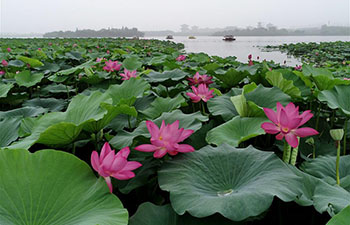WASHINGTON, July 19 (Xinhua) -- Chemists from Louisiana State University (LSU) has identified for the first time the cell wall structure of one of the most prevalent and deadly fungi, lending clue to antifungal drug development that can save millions of lives.
A study published in the latest issue of Nature Communications reported the high-resolution architecture of the cell wall of Aspergillus fumigatus.
This airborne fungus that multiplies at an extraordinary rate affects more than 200,000 people annually including a quarter of all leukemia patients, and kills more than half of these patients.
This is the first time anyone has looked at the whole cell of the fungus in its native state at such high resolution. The work provides the molecular basis to engineer more effective antifungal drugs, said Wang Tuo with LSU and the paper's senior author.
Aspergillus fumigatus has a semi-waterproof core comprised of two types of stiff sugar molecules, according to the study.
They are bridged by some highly branched sugars and coated by a layer of a sugar-protein mixture that constantly moves and undulates.
Wang and his colleagues will test the efficacy of various antifungal drugs against Aspergillus fumigatus in his lab at LSU.

















